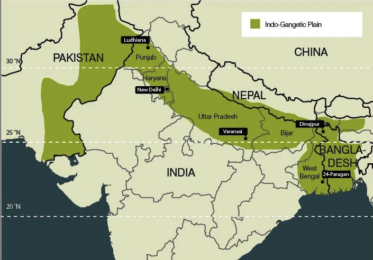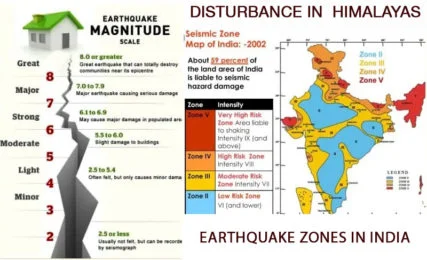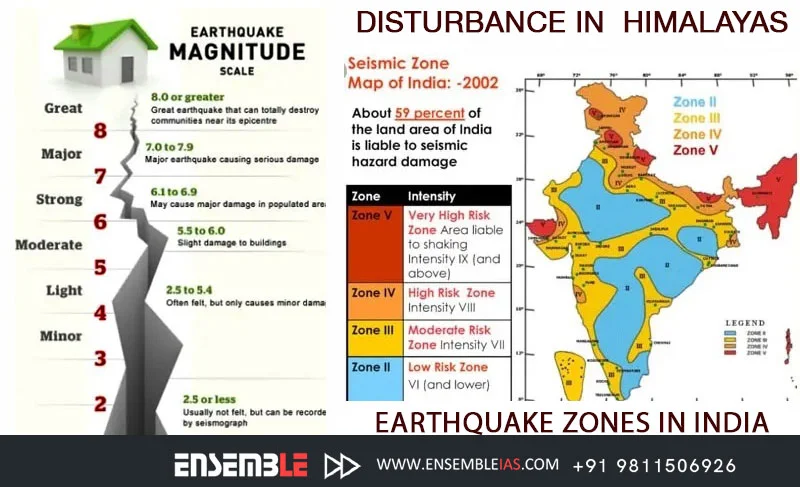Disturbance in Himalayas
Why in news:- Climate changes may have increased frequency of minor earthquake in Himalayas.
Definition of earthquake: -An earthquake can be defined as a sudden violent shaking of the ground as a result of movements in the earth’s crust or volcanic action. These earthquakes result from a series of earth movements brought about by a sudden release of energy during the tectonic activities in the earth’s crust.
Cause of earthquake
India is one of the highly earthquakes affected countries because of the presence of technically active young fold mountains – Himalaya.
The link to join the course : Online Courses

- Himalayan earthquake, as Indian tectonic plate is moving and converging with Eurasian tectonic plate at rate of five-six centimetres a year.
- The melting of thick ice sheet due to climate changes could reduce the load on earth crust this cause micro-level of earthquake.
- During Monsoon month precipitation on Indo–Gangetic Plain increase stress load on earth crust and decrease micro seismic in the Himalaya. During dry winter, reduce weight from water increase such micro seismic tremors.
- Construction of large scale infrastructure.

India has been divided into four seismic zones (II, III, IV, and V) based on scientific inputs relating to seismicity, earthquakes occurred in the past and tectonic setup of the region.
- Most of the earthquakes within the Himalaya occur at shallow depth (<30 km); with deep earthquakes indicating the descent of the Indian Plate into the mantle at the ends of the arc.
Earthquakes based on the depth of focus
The earthquakes are divided into three zones: shallow, intermediate, and deep based on their depth which range between 0 – 700 km.
-
- Shallow earthquakes have a focus 0 – 70 km deep.
- Intermediate earthquakes have a focus 70 – 300 km deep.
- Deep earthquakes have a focus 300 – 700 km deep.
Wadati–Benioff zone
- Deep earthquakes (300-700 km) are produced in this zone.
- It is a zone of subduction, along which earthquakes are common, which are produced by the interaction of a down going oceanic crustal plate against a continental plate.
- Some of the most powerful earthquakes occur along this zone.
- These earthquakes can be produced by slip along the subduction thrust fault or by slip on faults within the down going plate as the plate is pulled into the mantle.
For more details :
Best Online Coaching for Civil Service_IAS_ UPSC_IFS_IPS, Free Study Material
ENSEMBLE IAS ACADEMY
Call +91 98115 06926
Visit us:- https://ensembleias.com/
Online Store: https://online.ensemble.net.in/
Email: ensembleias@gmail.com
#earthquake #Himalaya #mountain #Disturbance_in_Himalayas #earthquake_in_himalayas




